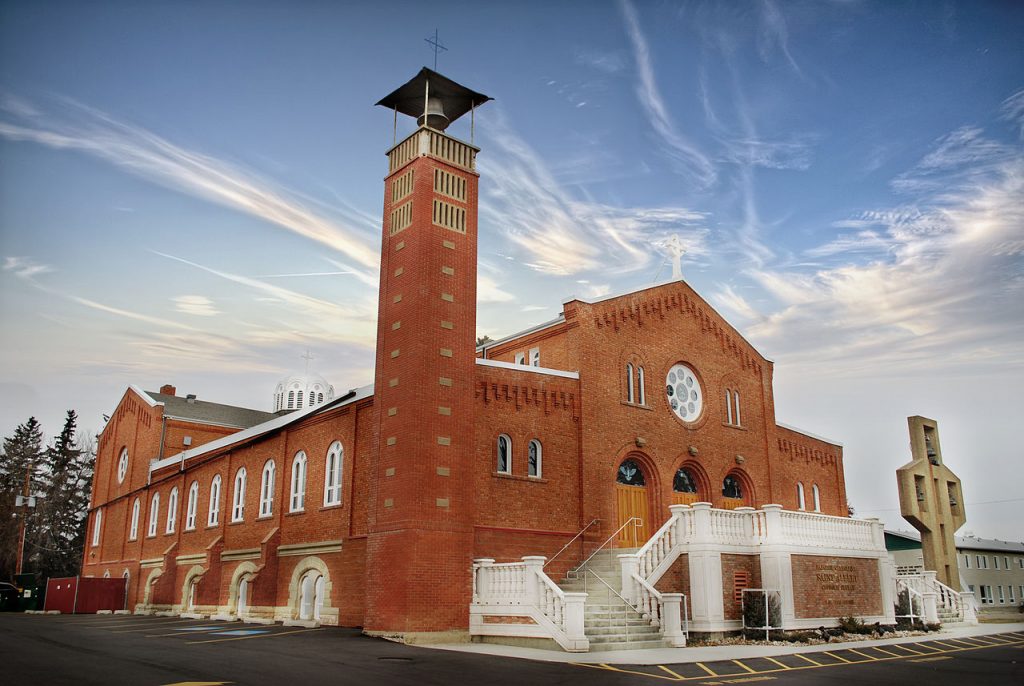FAST FACTS
- St. Albert is the oldest non-fortified community in Alberta.
- Founded in 1861, St. Albert was proclaimed a town in 1904, but then proclaimed as a new town in 1954 and run without an elected council, but by a board of administrators. In 1963, St. Albert was declared a town again, and an election for council was called.
- St. Albert officially received city status in 1977
- St. Albert is the sixth largest city in Alberta.
KEY METRICS
- Population as per the 2016 Municipal Census is 64,645
- According to the City’s most recent Community Satisfaction Survey, 99% of respondents provided a positive rating on quality of life in St. Albert
- St. Albert was voted “#1 Best Small City to Live in Canada” by MoneySense Magazine in 2016
- St. Albert was voted “#1 Best Place to Live in Canada” by MoneySense Magazine in 2014
- The average household income in St. Albert in 2010 was just over $136,000; the third highest for a municipality in Alberta
- St. Albert’s regional trading area exceeds 1 million people
- There are over 2,400 active businesses in St. Albert
- St. Albert Transit (StAT) currently operates 55 buses and carries over 1.1 million riders annually
OUR HISTORY
St. Albert was founded in 1861 as a Métis settlement by Father Albert Lacombe, OMI, who built a small chapel: the Father Lacombe Chapel in the Sturgeon River valley. This chapel still stands to this day on Mission Hill in St. Albert. The original settlement was named Saint Albert by Bishop Alexandre-Antonin Taché, OMI after Lacombe’s name saint; Saint Albert of Louvain. Although Lacombe had originally intended to found the mission at Lac Ste. Anne, the soil proved infertile and he moved the settlement to what would become St. Albert. The location offered several advantages, notably its easy access to supplies of wood and water, its excellent soil, it being a regular stopping point for First Nations peoples on their travels, and its proximity to Fort Edmonton, where the priests could purchase necessary supplies and minister to Catholic workers. A few years later, a group of Grey Nuns would follow Lacombe from Lac Ste. Anne. More Métis from Lac Ste. Anne arrived in 1863 and by December 1864, the population was roughly 300. In 1870, smallpox had spread north to St. Albert, killing 320 of 900 residents.
St. Albert was previously the site of two residential schools as part of the Canadian Residential School System. The St. Albert Indian Residential School (“Youville”) was located on Mission Hill within St. Albert city limits, and was operated by the Roman Catholic Church from October 22, 1873 to June 30, 1948, after being moved from the Lac Ste. Anne Mission where it was originally founded. The Edmonton Indian Residential School (“Poundmaker”) was located approximately 6 km east of St. Albert’s current downtown, and was operated by the Methodist Church from March 1, 1924 to June 30, 1968, later becoming the home of the Poundmaker Lodge rehabilitation centre. Between the two schools, 53 students are known to have died while present. A healing garden, Kâkesimokamik, was opened on September 15, 2017 as part of the truth and reconciliation process between the city of St. Albert and survivors of the residential school system.
In 1885, a scrip policy was implemented as a means of extinguishing the Aboriginal title of the Métis. The scrip awarded a certificate redeemable for land or money, either 160 acres, 240 acres or cash.
During the late 20th and early 21st centuries it was mistakenly assumed that the community had been named after St. Albert the Great. This was due to incorrect information in the 1985 history of St. Albert; The Black Robe’s Vision, published by the amateur historians of the St. Albert Historical Society. This led to the City of St. Albert erroneously promoting St. Albert the Great as the community’s patron saint and even erecting a statue of the wrong saint in the downtown area (which is still there). This misconception was not corrected until 2008. The original chapel has since become an historic site staffed with historical interpreters and is open to the public in the summer season.
Also in St. Albert is the St. Albert Grain Elevator Park. There are two historic grain elevators there; one constructed in 1906 by the Brackman-Ker Milling Company, the other was built later in 1929 by The Alberta Wheat Pool company. The original grain elevator constructed in 1906 was originally red in colour, but has faded over time to a metallic silver. There is also a reproduction of the original 1909 railway station housed at the Grain Elevators Park, the reproduction was constructed in 2005. On Madonna Drive stands the Little White School House which is open to the public. Arts and Heritage – St. Albert maintain this site as well as the Grain Elevators and other heritage buildings and sites under restoration in the city. In June 2009, the City Council approved a multi-staged plan for the heritage sites. The plan features the restoration of the grain elevators and the opening of both a Métis and French Canadian farm on adjacent lots by the River.


















